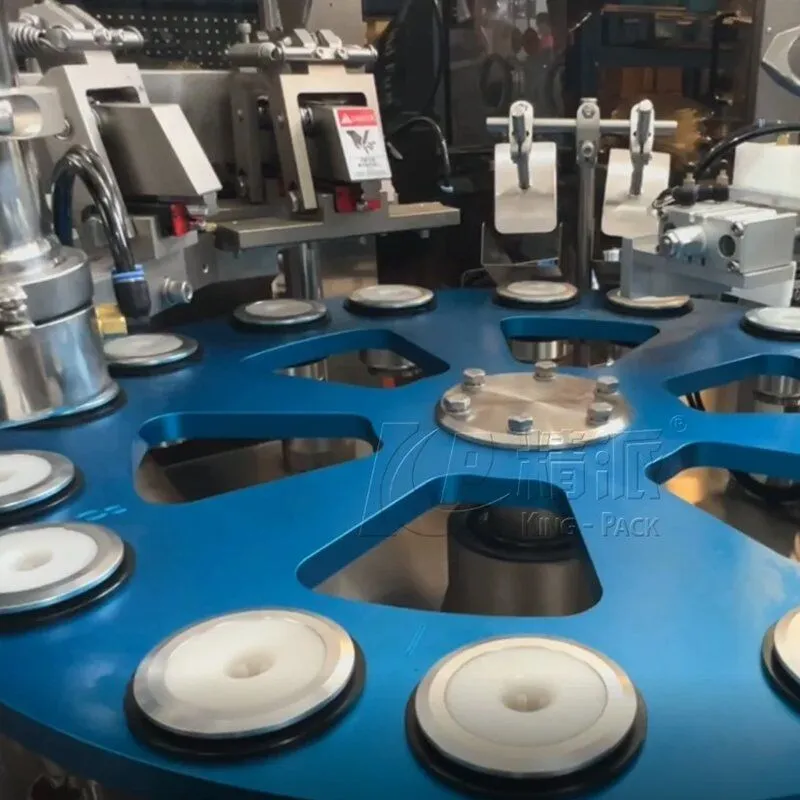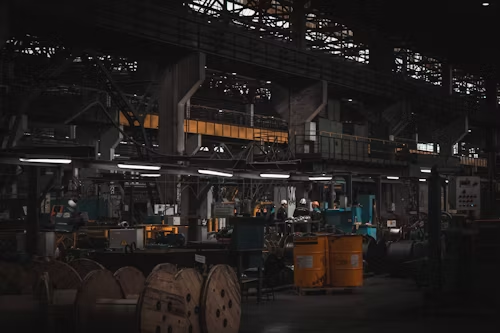How Does a Tube Filling Machine Work?
While shopping, it’s simple to forget the exact engineering that went into creating a perfectly loaded beauty cream or a toothpaste tube. To get each product ready for the market, however, a tube filling machine works systematically behind the scenes.
Companies that produce food, cosmetics, or pharmaceuticals depend on a tube filling and sealing machine to manage large quantities. They must do this in order to uphold high standards of quality.
Luckily, the modern machines are designed to measure, fill, and seal tubes with minimal waste. Additionally, they secure the goods from contamination and show the packaging for retail store shelves.
As industries evolve, so do the production needs. With the current era of automation, advanced solutions like the automatic tube filling and sealing machine are becoming more important. They allow factories to have faster outputs, reduced labor costs, and more precise filling capabilities.
Understanding how these machines work reveals more than just a series of mechanical steps. It shows how automation, design, and process control intersect to create efficient and reliable systems.
In the sections ahead, we will explore the component, the process, the different machine types, and how they fit into today’s global supply chain for a tube filling and sealing machine.
What Is a Tube Filling Machine?

A tube filling machine is specialized equipment that’s used to pack products into cylindrical tubes that we (consumers) use. It’s often a stainless steel construction. Like other machines, it also handles the manual burden. It can automate the measuring, filling, and sealing of products.
Factories used to do all of this by hand. It was slow, messy, and inconsistent. Now? One tube filling and sealing machine takes over the whole job. It’s quicker, cleaner and more accurate.
Main Components and Functionality
Picture it. A row of empty tubes, standing straight, waiting for their turn. The tube holder and orientation unit spins them gently, making sure each one faces the right way. Next, the filling pump puts the exact amount of product inside. No more. No less.
Sealing comes next. The sealing mechanism presses with heat, hums with ultrasonic waves, or folds and crimps metal tight. Then the coding and trimming station steps in, stamping date or the batch number and cutting away the extra. Finally, the control panel watches over everything i.e., temperature, volume, and speed.
That’s the anatomy. But how does it all actually run in real time?
Step-by-Step Working Process

We can fully comprehend how a tube filling and sealing machine operates now that we know what it is. Previously, we noted in the component section of the article that each aspect adheres to a meticulously planned order. To further understand how this process operates, let’s divide it into four parts.
Step 1: Tube Loading and Orientation
The first stage is placing empty tubes into the machine’s tube holders. In the case of automated filling machines, this is done through a hopper or feeding system that guides tubes onto the rotating turret. For semi-automatic tube filling machines, an operator loads tubes manually before the machine takes over.
Once loaded, the tube filler machine uses an orientation system. This is often a photoelectric sensor or mechanical guide. Each tube is rotated so the seam or printed artwork aligns properly. So basically, consistent branding (colors, logos, ingredients, and other elements) that we see on tubes is done in this step.
Step 2: Product Feeding and Metered Filling
With the tubes in place, the filling process finally begins. The machine’s product hopper stores the material which could be: cream, gel, or paste. Then, a pump or piston system pushes it through a nozzle into the tube.
In an automatic tube filling and sealing machine, each fill is carefully metered to ensure exact volumes. This prevents both underfilling and overfiling. The filling system is engineered to handle a variety of viscosities without air pockets or contamination.
Step 3: Sealing (Heat, Ultrasonic, or Crimping)
After filling, the tube’s open end must be securely closed. The procedure is determined by the substance:
- Heat-sealed jaws are commonly used to press and fuse the layers of plastic & laminate tubes.
- High-frequency vibrations are used in ultrasonic sealing to fuse plastic without causing heat damage to electronics that are sensitive to temperature changes.
- In filling and sealing machines, crimping is the technique of bending and flattening the end of metal tubes to create a strong mechanical seal.
Every sealing technique is adjusted to preserve the integrity of the product and to maintain a neat, polished appearance.
Step 4: Coding, Trimming, and Ejection
After sealing, tubes pass through a coding station. Here the batch numbers, expiration dates, or manufacturing details are printed. The machine often uses an inkjet or embossing system.
Next, excess material at the sealed end is trimmed for a neat appearance. For cosmetic products, where aesthetic appeal contributes to the product’s value, this stage is particularly crucial.
The completed tubes are ejected from the machine onto a conveyor or collection tray. At last, it’s prepared for additional packaging or boxing.
In large-scale operations, these tubes might be integrated with a labeling machine. They might also be integrated with a cartoning machine and palletising equipment. Then, they go straight into an automated filling product line.
Types of the Tube Filling and Sealing Machine

While all tube filling and sealing machines share the same basic functions, their design and usage vary to suit different situations. Let’s understand how.
Automatic Tube Filling and Sealing Machine
An automatic tube filling and sealing machine is usually made to handle the entire process without manual intervention. Therefore, these machines are ideal for large production runs where efficiency, speed, and precision are top priorities. Automated filling machines also have advanced controls with a touch screen that allow quick changeovers between products and tube sizes.
Applications for Plastic and Aluminum Tubes
Filling equipment for plastic tubes is widely used in the personal care, food, and pharmaceutical industries. They work well with heat or ultrasonic sealing methods and are suited for products like creams, gels, and lotions.
A tube filling and sealing machine for aluminum tubes are chosen for products that require strong barrier protection. This includes industrial adhesives, pharmaceutical ointments, and certain food products. There are also mechanical crimping machine parts to create a durable seal that withstands pressure and prevents the product from getting contaminated.
Aseptic vs Non-Aseptic Filling Process

Choosing between an aseptic filling process and a non-aseptic filling machine depends on how sensitive the product is. It also depends on the product’s shelf-life needs. Both approaches use a tube filling and sealing machine, but the level of sterility and environmental control differs significantly. Therefore, we’re now taking a look at both processes.
Aseptic Filling Process for Sensitive Products
The aseptic filling method is made for items that must stay free from microbial contamination during manufacturing. Pharmaceuticals, medical ointments, and several high-purity food items often use this technique.
Every component of the filling sealing machine that comes into contact with the product is sterilised in an aseptic setup. The filling area is kept in a cleanroom setting, frequently with controlled humidity and HEPA-filtered air. Before being filled, the product is sterilised, and the tubes are cleaned to remove any impurities (usually using chemical sterilants or UV radiation).
For sensitive formulations, this high degree of sanitation is crucial since it prolongs the product’s shelf life and lessens the need for preservatives.
Non-Aseptic Filling for Personal Care and Industrial Use
When sterility is not very important, non-aseptic filling machines are used. This happens with cosmetics, personal hygiene products, and many industrial pastes or adhesives. The atmosphere does not have to adhere to sterile production requirements, even if these goods still need to be filled precisely and cleanly.
In these cases, the focus is on speed and volume as well as on presentation. Plastic tube filling and sealing machine work efficiently for lotions or gels. Aluminum tube filling and sealing machine for industrial adhesives also work well. They do this without the added complexity of sterilization.
Both methods aim for accurate filling and reliable sealing. The choice depends on the product’s safety needs and the industry’s regulations.
Tube Filling and Sealing Machine Supply Chain

For companies that will be or are already relying on a tube filling and sealing machine, securing the right equipment is as important as the production process itself.
Each supplier in the market offers different levels of offerings so knowing how to choose a reliable manufacturer is important to choose the best option.
Choosing a Reliable Manufacturer in China
China’s advanced production capabilities and affordable prices have made it a major center for making filling sealing machines. Many firms specialize in certain machine types. These include filling machines for plastic tubes, aluminum tubes, and automatic tube filling and sealing machines.
It’s crucial to consider factors other than price when choosing a manufacturer. Technical assistance, spare part availability, after-sales service, and build quality can greatly affect how well the machine works.
Businesses like King Pack have established a solid name by offering dependable equipment. They also provide constant quality assurance. They can adapt machinery to specific production needs.
Working with a Factory or Global Supplier
One benefit of working directly with a manufacturer is that you can communicate directly with the production teams and engineers that create the machines. Better customization, quicker response, and clearer technical instructions may result from this.
Businesses that need equipment from many manufacturers can use global vendors. These vendors offer access to multiple brands, international warranties, and shipping support. Additionally, they can assist in managing import laws, certifications, and market compliance.
Conclusion
The tube filling and sealing machine forms the base of modern packaging processes. It provides secure sealing and accurate tube alignment. The production process is streamlined and waste is reduced with the correct equipment.
Working with a seasoned manufacturer like King Pack can help companies looking to increase or improve their production run more efficiently.




